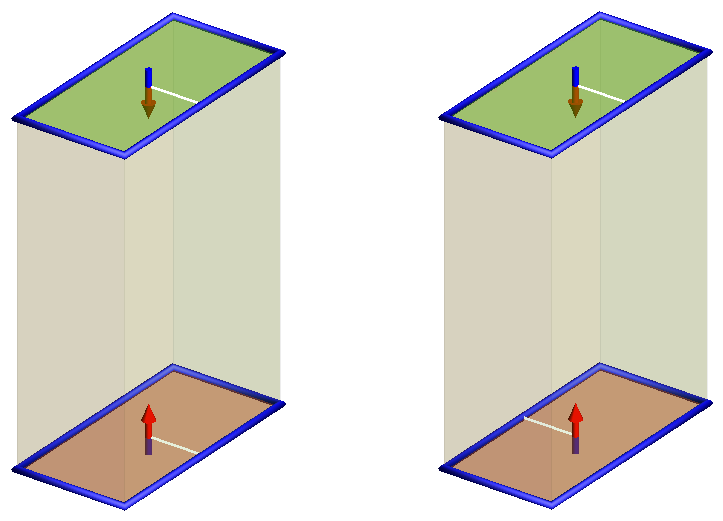Reference Vector
The reference vector specifies the reference direction for a waveguide port.
- For a rectangular waveguide, the number of half-wavelengths across the width of the waveguide.
- For a circular waveguide, the number of radial variations.

Figure 1. On the left, the reference vector is defined in the direction of the waveguide width. To the right, the reference vector is defined in the direction of the waveguide height.
For a rectangular waveguide, defining the reference vector in one direction, the dominant mode at a frequency might be TE10. Rotating the reference vector with 90° and solving the same problem, the dominant mode will be indicated as TE01.
For a circular waveguide, there is no ambiguity which direction is for m or n.

Figure 2. Two waveguide ports with equal reference directions (on the left) and two waveguide ports with opposite reference directions (to the right). For both these cases, the magnitude for S11 and S21 are identical. For the case where the reference directions differs, the phase for S21 differ by 180° from S11.